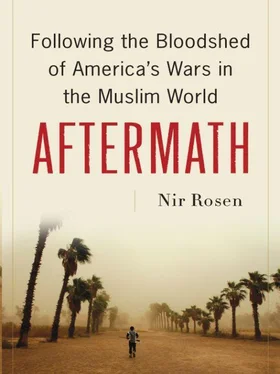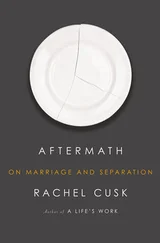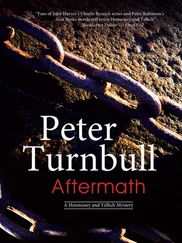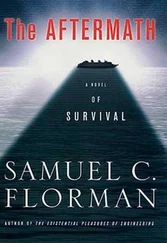“It is the beginning of the separation,” one Shiite cleric explained to me with a smile in May 2003. Immediately after the war Sunni clerics complained that at least thirty of their mosques had been taken over by Shiites and issued statements in newspapers demanding their return, but they were never returned. In some cases Shiites were reclaiming places of worship that Saddam had seized and given to Sunnis. This was the case with the Shiite Hassan Mosque in Karbala, which was given to Sunni hardliners in the 1990s.
According to a friend of mine in Najaf, the cleric Sheikh Heidar al-Mimar, “There were no Sunnis in Najaf before the 1991 intifada, but Saddam brought all these Wahhabis to the Shiite provinces in order to control Shiites. These Wahhabis were very bad with us, and all Shiites were afraid of them. Saddam wanted to Sunni-ize Najaf and Karbala.” As a result, following the war these Sunni interlopers were immediately targeted by the inchoate Shiite militias.
Shiite pilgrims traditionally donated money to the shrines of the imams they visited. This money added up to millions of dollars every month. Shiites believed Saddam used it in the 1990s to finance his Faith Campaign, which involved promoting Sunni practices in Iraq and even, for the first time, tolerance toward Wahhabis, perhaps because of their deep hatred for Shiites. Shiites resented the alleged theft of their money for Sunni purposes and sought to impose justice after the war. In July 2003 members of Muqtada al-Sadr’s Mahdi Army militia even debated seizing the giant Um Al Qura Mosque in Baghdad’s Sunni bastion of Ghazaliya. The mosque served as the headquarters for the Association of Muslim Scholars, the neo-Baathist body that had been formed just after the American invasion to protect Sunni interests and unite Sunni leaders under the command of the Baathists-turned-clerics who would soon control much of the insurgency.
The revolutionary Shiite wave that swept Iraq in the wake of the American invasion overthrew the order that had existed in Iraq until then. Shiites would not let history repeat itself. On April 7 Ayatollah Kadhim al-Haeri, a cleric born in the Iraqi city of Karbala but exiled in the Iranian holy city of Qom since 1973, appointed Muqtada as his deputy and representative in Iraq for all fatwa affairs. Haeri urged Iraqis to kill all Baathists to prevent them from taking over again. In the southern city of Kut on April 18, Abdul Aziz al-Hakim, brother of Shiite opposition leader Muhammad Bakr al-Hakim and leader of the Supreme Council’s ten thousand-strong Badr Brigade militia, proclaimed that Shiites were the majority in Iraq and hinted that they hoped for an Islamic government. That same day in Baghdad, Sheikh Muhammad al-Fartusi, Muqtada’s deputy for Baghdad, warned that Shiites would not accept a democracy that would obstruct their sovereignty. If Shiites did not have a say in the government, he said, it would be worse than under Saddam.
In late April 2003 Shiites staged a massive celebration of their identity and show of force. They descended in the millions upon Karbala for Arbaeen, the day marking the end of the forty-day mourning period for the Prophet Muhammad’s slain grandson Hussein. These ceremonies had been severely restricted under Saddam, and it was the first time anybody could remember openly expressing such pride in their identity as Shiites. Sunnis watched with concern and some disdain for rituals they rejected as un-Islamic or primitive. On my way down to Karbala, I was detained by armed Shiite men who feared I was a Wahhabi. I talked and smiled my way out of it. Being an American wasn’t so bad in those days. At the time the incident did not seem significant, but in retrospect I realized it was: members of a Shiite militia were protecting their village from Sunni extremists—as early as April 2003. Throughout the ceremonies it was clear that Shiites were terrified of a phantom Wahhabi threat. In centuries past Wahhabis had swept up from Arabia and sacked Shiite shrines. Now Shiites feared Wahhabis would poison the food distributed to pilgrims. Soon many Shiites would view all Sunnis as Wahhabis.
The ceremonies of Arbaeen and the more important holiday that precedes it by a month, Ashura, are not merely individual acts of contrition. They are performed collectively and publicly by Shiites, and these rituals unite and define the Shiite sense of community. For nearly two months of the year Shiites are engaged in these unique rituals and mourning processions. The messages are lashed into their bodies and minds. The virtues of Shiite leaders are contrasted to the alleged immorality of early Sunni leaders, who supposedly stole the mantle of leadership wrongly from Hussein and showed no mercy to his family, even the children. The founders of the Umayyad dynasty, perceived to be usurpers of the throne that should have gone to descendants of the Prophet through his cousin and son-in-law Ali (Hussein’s father), are condemned—and by implication so are their followers, Sunni Muslims. That first Arbaeen after the war was marked by Shiites not with the traditional sorrow or mourning that lead to flagellation and crying but with triumphalism. Iraq was now theirs. The Shiites who made their way to Karbala were united in one message: the hawza , or Shiite theological seminary and seat of the ayatollahs in Najaf, was their leader. Banners, songs, statements, all demanded that the hawza should lead Iraq. These sentiments did nothing to assuage Sunni fears, nor were they consistent with the promises of exiles such as Ahmad Chalabi, who promised that Iraq’s Shiites were secular and sought democracy. A few years later Shiite religious parties like the Supreme Council would control the country, and their militias would become the Iraqi police and army, running their own secret prisons, arresting, torturing, and executing Sunnis. Iraq now belonged to the followers of Muhammad Baqir al-Sadr and his relative Muhammad Sadiq al-Sadr—the first and second martyr, respectively. Even Ahmad Chalabi, during the December 2005 elections, waved posters of Sistani in Sadr City after Sistani was criticized on Al Jazeera.
IN MARCH 2004 I witnessed the Ashura bombings that killed nearly 200 Shiite pilgrims in both the holy city of Karbala and Baghdad’s Kadhimiya district. These attacks failed to provoke massive retaliation, but the sectarian violence did increase. A few days after the bombings, in Baghdad’s Shurta neighborhood, an SUV with masked men shot up a Shiite mosque; several days after that a Sunni cleric was killed in a drive-by shooting while walking to his mosque for the evening prayer. Hundreds attended his funeral, which was guarded by a phalange of very anxious armed men. Surrounded by his bodyguards, Sheikh Ahmad Abdel Ghafur al-Samarai of the Association of Muslim Scholars spoke at the funeral, calling on the youth to protect their religious leaders. It was like calling for the creation of self-defense militias. Following the murder of another Sunni sheikh, Dhamer al-Dhari, Samarai blamed the Americans for paying mercenaries to commit murders and cause sectarian strife. At the same time, he blamed the Americans for favoring the Shiites and discriminating against the Sunnis, and criticized them for not disarming the Kurdish and Shiite militias. Samarai also called for uniting Sunnis to prevent other militias from taking over, and blamed the occupiers and the Zionists for playing with Iraq’s factions. No one seemed to be talking about Sunni-Shiite unity anymore.
Two nights after the Ashura bombings, the Qiba Mosque—a Sunni mosque in a Shiite stronghold in Baghdad’s Shaab district—was attacked. I had befriended a young man my age called Firas from the neighborhood; he called to tip me off about this, adding that the mosque was for “Wahhabis.” I asked the hotel where I was staying for its taxi driver, but I didn’t explain why I was going to Shaab. Not a single car was out as we drove for twenty minutes from the city center to the mosque. The streets of Shaab were misty and unlit. The road before the mosque was blocked by a truck and about twenty men holding Kalashnikovs.
Читать дальше











